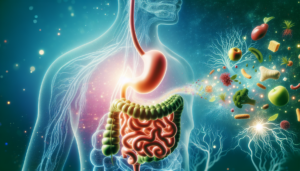How Circulation Affects Physical Performance
Understanding Blood Circulation and Its Impact on Physical Performance
The Importance of Circulation in the Human Body
Blood circulation is a vital process that sustains life by transporting oxygen, nutrients, hormones, and waste products throughout the body. Understanding how circulation affects physical performance is crucial for athletes, fitness enthusiasts, and anyone looking to improve their overall health. In this section, we will explore the role of circulation, the components involved, and how they contribute to athletic performance.
Components of Circulation
-
The Heart: The heart is the central pump of the circulatory system. It consists of four chambers – the right atrium, right ventricle, left atrium, and left ventricle. The heart’s ability to pump blood efficiently is critical for delivering oxygen and nutrients to working muscles during physical activity.
-
Blood Vessels: Blood vessels include arteries, veins, and capillaries. Arteries carry oxygenated blood away from the heart, while veins return deoxygenated blood back to it. Capillaries facilitate the exchange of oxygen, carbon dioxide, and nutrients between blood and tissues. A well-functioning vascular network is essential for optimal physical performance.
- Blood: Blood consists of red blood cells, white blood cells, platelets, and plasma. Red blood cells, containing hemoglobin, are responsible for transporting oxygen. Adequate red blood cell count and hemoglobin levels are essential for maximizing endurance and performance during exercise.
The Role of Circulation in Physical Performance
Oxygen Delivery to Muscles
During exercise, the body’s demand for oxygen increases significantly. Circulation plays a pivotal role in delivering this oxygen to working muscles. The more efficiently oxygen is transported, the better an athlete can perform.
-
Aerobic Capacity: Aerobic capacity, or VO2 max, measures the maximum amount of oxygen the body can utilize during intense exercise. A higher VO2 max indicates better cardiovascular fitness, which is closely linked to circulation efficiency.
- Muscle Performance: Improved oxygen delivery to muscles enhances endurance, reduces fatigue, and accelerates recovery. Athletes with better circulation can sustain higher intensities for more extended periods.
Nutrient Transport and Waste Removal
In addition to delivering oxygen, blood circulation transports essential nutrients to muscles, such as glucose and fatty acids, which are vital for energy production. It also facilitates the removal of metabolic waste products, such as lactic acid, that can lead to muscle fatigue.
-
Energy Production: Nutrient availability directly influences energy production pathways, including aerobic and anaerobic metabolism. Well-circulated blood ensures a continuous supply of these nutrients during exercise.
- Lactic Acid and Recovery: Efficient blood flow helps clear lactic acid and other waste products from muscles, reducing soreness and promoting faster recovery times after exertion.
Factors Influencing Circulation
Hydration
Proper hydration is crucial for maintaining effective blood circulation. Dehydration can lead to thicker blood, making it more challenging for the heart to pump efficiently. This can impair overall performance and increase the risk of injuries.
- Hydration Strategies: Athletes should implement strategic hydration protocols before, during, and after exercise to maintain optimal blood viscosity and support circulation.
Body Composition
Body composition significantly affects circulation. Higher levels of body fat can increase the distance blood must travel, putting additional strain on the cardiovascular system. Conversely, individuals with a higher percentage of lean muscle mass often experience more efficient circulation.
- Body Fat and Performance: Reducing excess body fat can enhance circulation and improve physical performance by lowering the workload on the heart.
Fitness Levels
Regular physical activity enhances cardiovascular health, resulting in improved circulation. Aerobic exercises, in particular, stimulate the development of new blood vessels, allowing for greater oxygen delivery and nutrient transport.
- Aerobic Training: Incorporating aerobic training into a fitness routine boosts the efficiency of the heart and enhances overall blood flow.
Altitude and Environment
Altitude can significantly impact circulation and physical performance. At higher elevations, the air contains less oxygen, forcing the body to adapt by increasing heart rate and red blood cell production.
- Altitude Training: Training at altitude can lead to increased red blood cell count, enhancing oxygen-carrying capacity. Athletes often utilize this principle to improve performance at lower elevations.
Strategies to Improve Circulation for Enhanced Performance
Cardiovascular Exercise
Engaging in cardiovascular exercises such as running, cycling, swimming, or rowing significantly improves circulation by strengthening the heart and increasing vascular efficiency. These activities boost both aerobic capacity and capillary density, enhancing nutrient and oxygen delivery to muscles.
Strength Training
Incorporating strength training into a workout regimen not only builds muscle but also enhances circulation. Resistance exercises improve blood flow to muscles, promoting vascular health and increasing the size and number of capillaries in active tissues.
Flexibility and Stretching
Flexibility exercises and stretching play a vital role in promoting overall circulation. They help maintain the elasticity of blood vessels and improve range of motion, facilitating blood flow during physical activity.
Nutritional Considerations for Optimal Circulation
Iron-Rich Foods
Iron is essential for the production of hemoglobin, which carries oxygen in the blood. Consuming iron-rich foods such as red meat, beans, lentils, and leafy greens can enhance oxygen transport and overall endurance.
Omega-3 Fatty Acids
Omega-3 fatty acids found in fatty fish, flaxseeds, and walnuts can improve blood flow by promoting healthy blood vessel function. These nutrients help reduce inflammation and support overall cardiovascular health.
Hydration
As previously mentioned, staying hydrated is crucial for maintaining effective circulation. Athletes should focus on consuming fluids that not only quench thirst but also replenish electrolytes lost during exercise.
Antioxidant-Rich Foods
Fruits and vegetables high in antioxidants, such as berries, oranges, and leafy greens, help combat oxidative stress associated with intense exercise. This can enhance recovery and improve circulation over time.
The Impact of Circulation on Recovery
Recovery after exercise is as essential as the workout itself. Circulation plays a critical role in this process by supplying nutrients and oxygen needed for muscle repair and growth.
Active Recovery
Incorporating active recovery sessions, such as light jogging or swimming, can promote blood flow and accelerate the removal of metabolic waste products, enhancing recovery.
Massage Therapy
Manual massage or self-myofascial release techniques, such as foam rolling, can also improve circulation to muscles. This aids in reducing soreness and improving flexibility, thereby enhancing recovery.
Monitoring Circulation: Tools and Techniques
Athletes and fitness enthusiasts can track their cardiovascular health and circulation using various tools. Some of these include:
-
Heart Rate Monitors: Monitoring heart rate during exercise provides insight into cardiovascular efficiency and overall performance.
-
Pulse Oximeters: These devices measure oxygen saturation levels in the blood, helping to assess how well oxygen is being transported to tissues.
- Fitness Trackers: Wearable fitness trackers can provide valuable information on activity levels, heart rate variability, and recovery metrics.
Psychological Factors and Circulation
Mental state can influence circulation as well. Stress and anxiety can lead to vasoconstriction, reducing blood flow. Techniques such as mindfulness, deep breathing, and yoga can help manage stress, promoting better circulation and performance.
Conclusion: The Interconnectedness of Circulation and Performance
While the importance of circulation in physical performance cannot be overstated, it is crucial to remember that it is interconnected with various other factors, including nutrition, exercise, hydration, and mental health. Improving circulation through targeted strategies not only enhances physical performance but also contributes to overall well-being and health. By understanding and optimizing these elements, athletes and fitness enthusiasts can achieve their desired performance outcomes.








